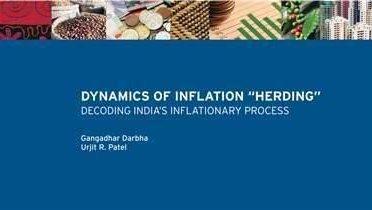Compared to immediately preceding years, that is, its own recent history, India’s inflation became unhinged (thereby reversing creditable performance) from as far back as 2006. In the last two years, among its major comparators India has the highest rate of consumer inflation; it is also volatile in relation to its peers in Asia and the BRICs. This paper puts forward an empirical framework to analyze the time series and cross-sectional dynamics of inflation in India using a large panel of disaggregated sector prices for the time period 1994-95 to 2010-11. It has been motivated in no small part to official pronouncements seemingly unencumbered by methodological rigor. There are several grounds for distrust by citizens regarding policy makers in this context. Firstly, officials have attributed the upswing in prices (measured by all indices) to food supply constraints, and therefore claim they are powerless to do anything about it. Secondly, they resort to hand wringing and public communication that essentially amounts to “we are staring the problem down” as the common refrain for an inordinately long time; in tandem, rolling “(mental) spreadsheet forecasts”—that have been optimistic by some distance—were, and still are, put out at regular intervals to give succor and hope to the public. Thirdly, a spate of recent statements seems to suggest that the medium-term objective of around three percent inflation articulated by inter alia the Reserve Bank of India (RBI)3 is being given a quite burial.
The operational methodology introduced in the paper facilitates a rigorous exploration of issues that have been, at best, loosely posed in policy debates such as diffusion or comovement of inflation across sectors, role of common and idiosyncratic factors in explaining variation, persistence, importance of food and energy price changes to the overall inflation process, and contrast the recent experience with the past. It is found that the current period of high inflation is more cross-sectionally diffused, and driven by increasingly persistent common factors in non-food and non-energy sectors compared to that in the 1990s; this is likely to make it more difficult for anti-inflationary policy to gain traction this time round compared to the past.
The paper has also introduced a novel measure of inflation, viz., Pure Inflation Gauges (PIGs) in the Indian context by decomposing price movements into those on account of: (i) aggregate shocks that have equiproportional effects on all sector prices; (ii) aggregated relative price effects; and (iii) sector-specific and idiosyncratic shocks. While aggregate Wholesale Price Index (WPI) inflation by the end of 2008-09 had declined to about 1 percent (from about 8 percent in 2007-08), PIGs were running at around 3 percent; in contrast to the headline inflation, the most recent trough for PIGs was 2005-06 and not 2008-09. The decline in (and the level of) headline inflation in 2008-09 may have conveyed to the authorities that they had less need of (or more time for) tightening than was the case looking at inflation measures corrected for sectoral and idiosyncratic shocks. If PIGs, in conjunction with our other findings, for example, on persistence had been used as a measure of underlying (pure) inflationary pressures, the monetary authorities may not have been sanguine regarding the timeliness of initiating anti-inflationary policies.
The Brookings Institution is committed to quality, independence, and impact.
We are supported by a diverse array of funders. In line with our values and policies, each Brookings publication represents the sole views of its author(s).



